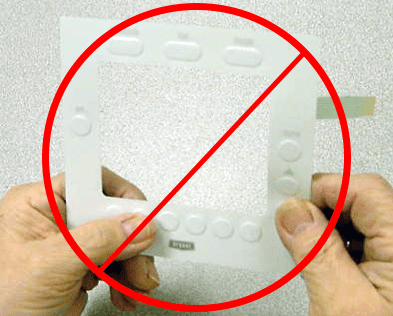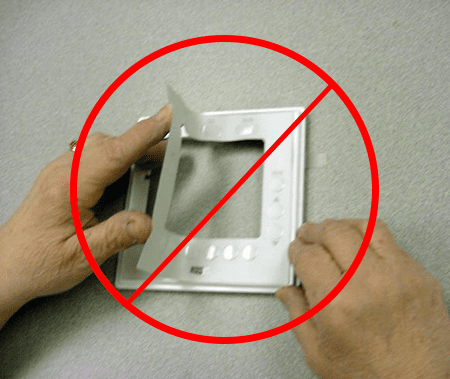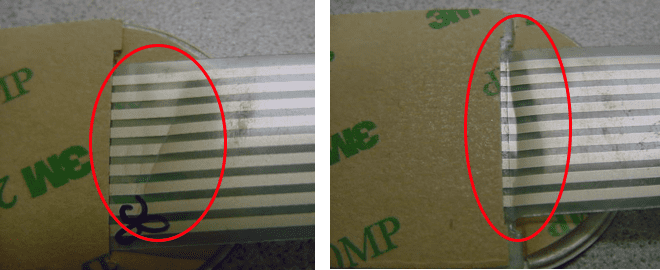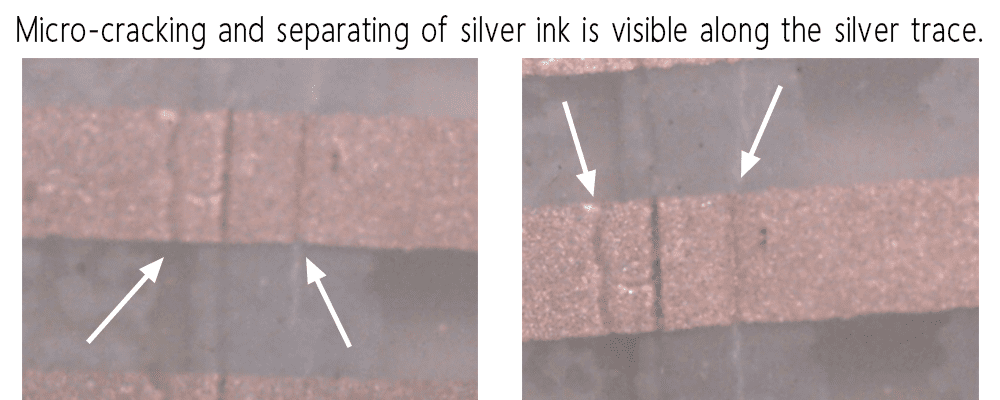How to Prevent Membrane Switch Failures
It’s no secret that durability is the appeal of adding a membrane switch to a product. They are built to last which is why they are still often chosen over the newer technologies. However, what people don’t realize (or forget) is that improper handling is the number one reason for switch failures. Here are 3 tips for proper handling!
1. Only press the switches when the keypad is on a flat surface – if the operator presses the domes or keys in the air, unsupported, there is a risk of bending the legs of the metal dome. Always test the key activation on a flat, solid surface.

2. Never bend a membrane switch – placed components (domes, LEDs) are at risk of being damaged rendering the switch defective. If a metal dome leg is bent the dome could pop out of place and not properly snap back or the bond with the LEDs could become damaged causing them to fail.

3. Prevent creasing of the tail – severe creasing will cause the silver ink to crack which creates an open circuit or keypad failure


{{cta(‘d2501cab-8eae-4490-9c75-c1e7b971d4e3’)}}
Pro tip: When applying the membrane switch to a backing panel, use a tacky cloth with isopropyl alcohol to clean the entire surface to remove any dirt or debris. Debris on a panel will cause a bump after the membrane switch is assembled to the panel – because the adhesive used to adhere it to the panel is so strong, the debris cannot be removed without causing damage to the switch.
